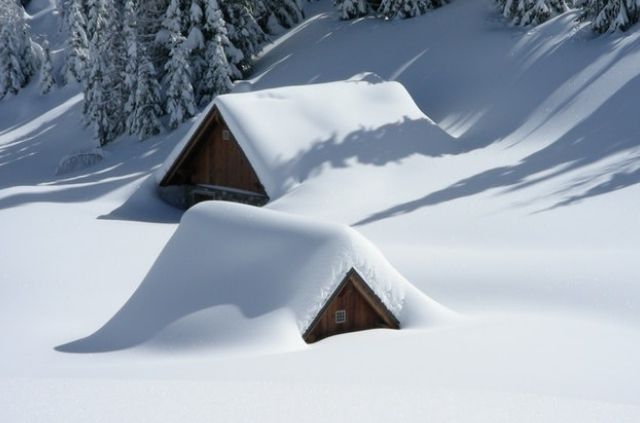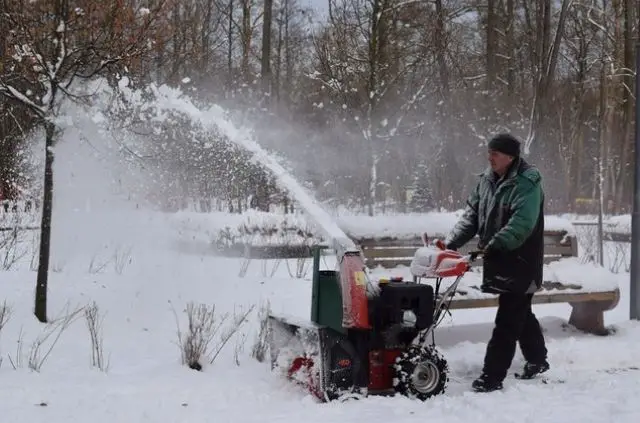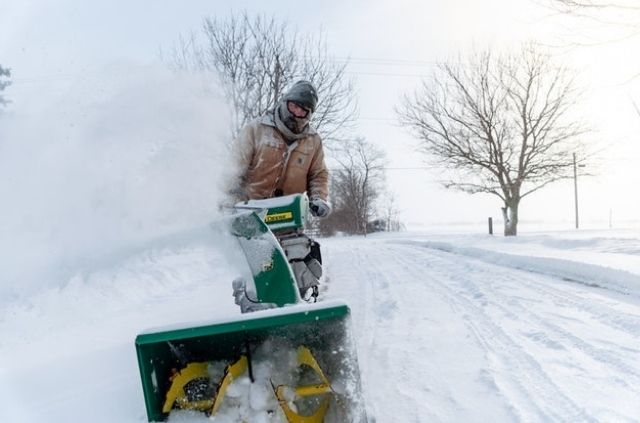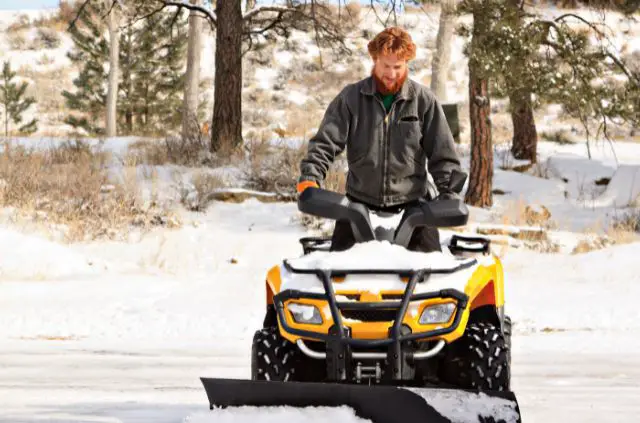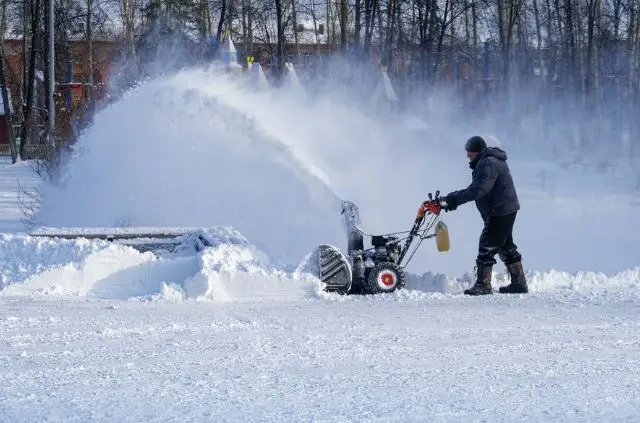Can a Snow Blower Remove Ice?
Snowblowers are a great way to remove heavy snow. In just a few minutes, they can clean sidewalks and driveways that would normally take hours to clear by hand. They don’t just save time. By preventing heart attacks, they even save lives. But can a snow blower remove ice?
Snow blowers are capable of removing ice – but not every machine is up to the job. Before you invest in a pricey Ariens or Toro snow blower, we invite you to take a careful look at what we have to say about when ice will be a problem (and when it won’t) and how to use a snowblower on an icy sidewalk or driveway.
We will also answer some frequently asked questions about using a snowblower to get rid of slush and whether snow blowers can overheat or freeze up, among other common concerns.
Ice 101: What You Need to Know About Icy Surfaces
Ice is a major outdoor hazard in the winter in colder areas of the United States and all of Canada. Every year, tens of thousands of people fall on ice, suffering abrasions, contusions, sprains, strains, and broken bones.
The Centers for Disease Control reports that every year people get injured from complications of falls on ice in the United States alone. If you are a homeowner, you are liable to keep your premises safe for delivery people and guests.

If they fall on ice you failed to remove from your driveway or sidewalks, you at least might have to file a homeowners insurance claim, and you might be liable for anything insurance doesn’t pay.
And if you fall on the ice on your own property, you have to deal with pain, disability, and lost time from work. We can all agree that ice is something that we all have to control, but not all surfaces are equally likely to get iced over.
- Ice is more of a problem on light surfaces than on dark surfaces
You have probably noticed that ice on asphalt melts faster than ice on concrete. That’s because dark surfaces absorb more heat when the sun is out. If you keep the snow off dark surfaces, the ice melts faster, too.
- Salt and other deicers work better under ice than on top of it
You’re probably picky about the chemicals you put out, because they could drain into your yard and flower beds. But if you use deicers on your driveway, it’s best to put them down before it snows.
As you pack the snow down, the ice that forms close to the surface mixes with the deicer so it melts just a little faster when temperatures finally warm up.
- Snowblowers work better on chunks of ice than on sheets of ice
The ideal situation for using a snowblower to get rid of ice is snowblowing chunks of ice. Maybe there is a ridge of ice in the middle of your driveway that you can attack from the edges.
Or maybe you can break up ice with a shovel before you let the augers of your snowblowers break it up and blow it out. The bigger your snowblower, the more ice it can handle. But small snowblowers can’t handle thick sheets of solid ice.
How Do Snowblowers Get Rid of Ice?
Knowing a little about how snowblowers work will help you choose the right snowblower for the job.
Snowblowers are equipped with augers for picking up snow and debris. A snowblower can have one, two, or three augers. Snowblowers that have dual or triple augers are a lot more efficient at picking up ice.
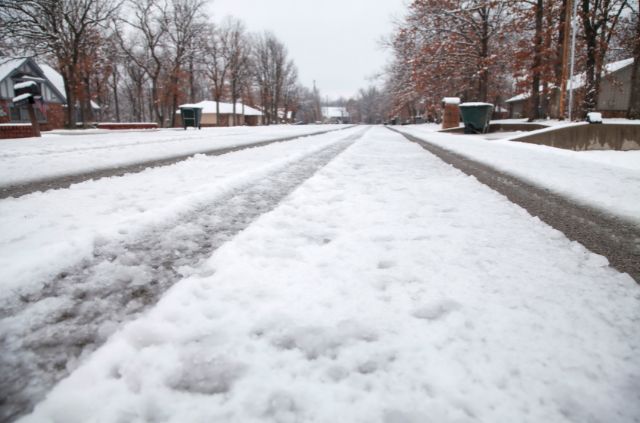
A snowblower with a single auger is basically a motorized broom. Don’t even try to use a single-auger snowblower to remove ice.
That leaves us with the two-stage and three-stage snowblowers. You will generally get better results with a gas snowblower rather than an electric snowblower.
Gas vs Electric
Electric snowblowers are inexpensive. They don’t require a lot of maintenance. But they don’t work very well in extremely cold conditions.
Even though gas snowblowers cost more, they are more powerful for ice removal. They operate in temperatures down to -40 (should you want to use them).
They can break up a lot more ice than their electric counterparts. You can even use a gas snowblower on ice more than 6 inches (15 cm) thick, but you should not even try this with an electric model.
How to Snowblow an Icy Driveway:
So, what is the procedure for snowblowing an icy driveway or an iced-over sidewalk?
Here is the secret to using a snowblower to get rid of ice:
Remember that these machines are designed to pick up loose objects (like snow) from most surfaces. The augers stop when they sense a solid surface.
That means you need to break up ice into chunks as much as possible before you start snowblowing. If you aren’t taking this additional preparatory step, then there is a second secret to success in removing ice with your snowblower:
Move slowly.
If your snowblower detects edges to the ice, the augers can get under the ice and lift it away. But if you push your snowblower too fast, it will not be able to detect the edge of the ice.
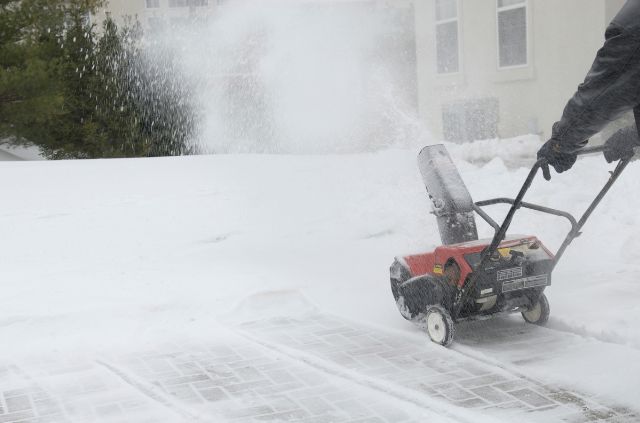
There is one more rule for successful ice removal with a snowblower.
Make sure you are moving in the same direction as the wind.
You don’t want the wind blowing cold snow and chunks of ice into your face. If you can feel the wind in your face before your start, choose a different direction.
Frequently Asked Questions:
Can you use a snow blower on sleet?
Snowblowers aren’t designed for optimal removal of sleet or icy mix, but you can use them on sleet if you go slow. If you don’t see sleet and snow coming out when you run your snowblower over, it’s burning up your belt.
Can a snowblower remove slush?
You can use a snowblower to remove slush, but let it run for several minutes after you are finished so the heat of the engine dries out the auger.
Search Terms
- Can a snow blower remove ice?
- How do you snowblow an icy driveway?

